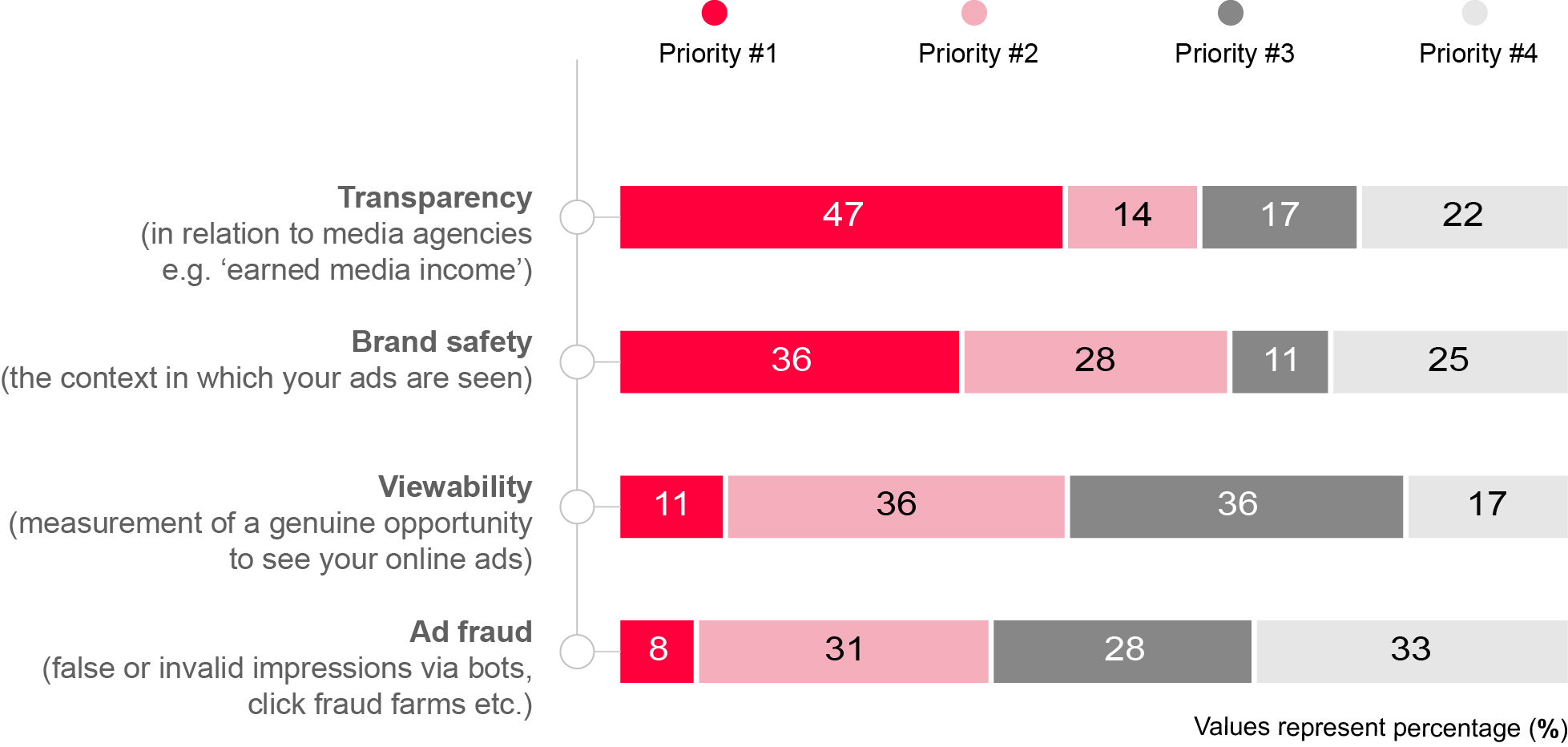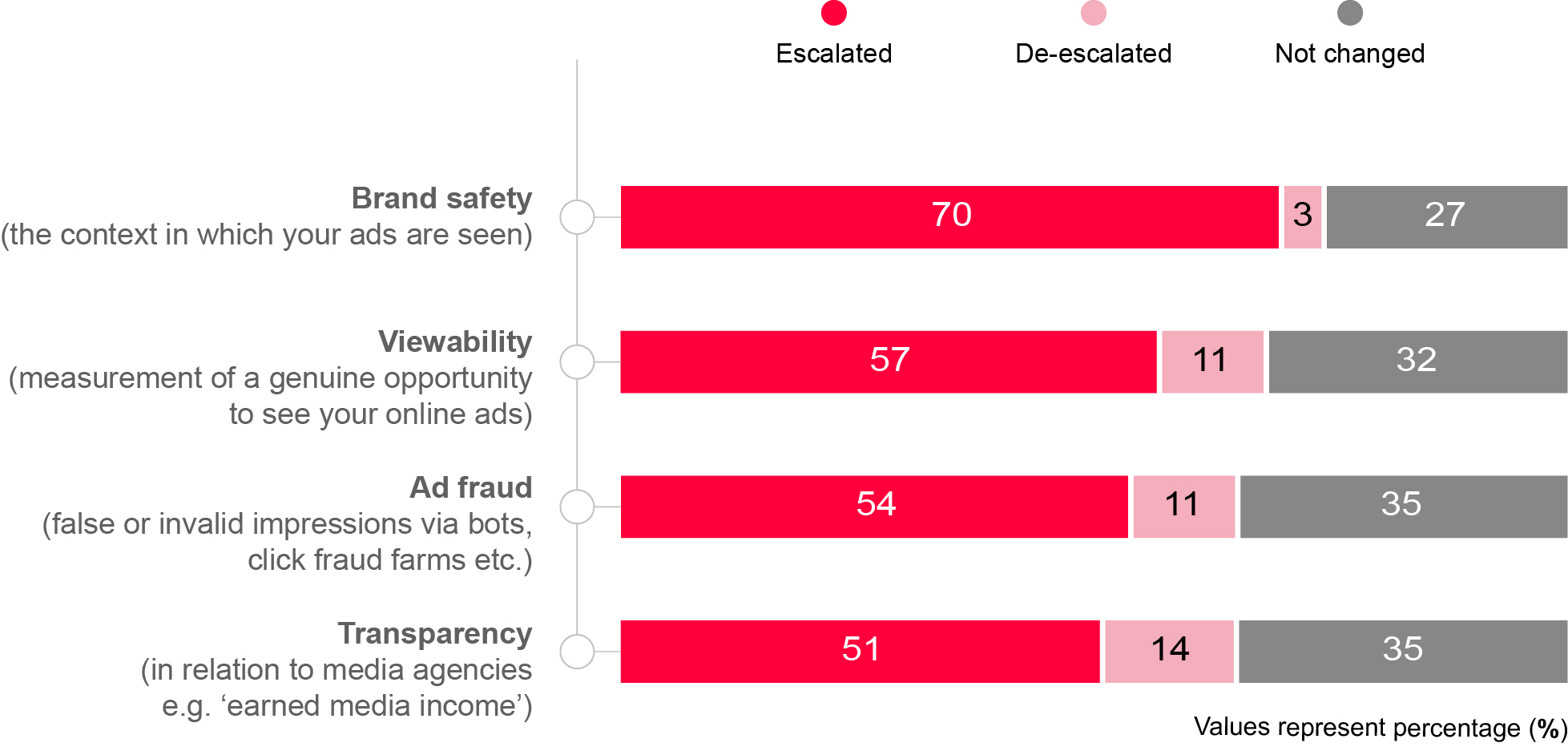Global marketers making radical changes to media management
WFA research indicates dramatic change on transparency measures, contracts, viewability standards, internal media knowledge and ad fraud
Share this post
New research by the World Federation of Advertisers (WFA) has found that global brands have made major changes or are planning to make extensive changes to their media governance practices across a wide range of areas.
In the last 12 months, 35 multinational companies with a total annual marketing spend of more than $30bn globally report wide-ranging actions as they seek to respond to concerns that too many companies have lost control of their media activity.
The study suggests the world’s biggest brand owners are responding to the recent Media Transparency report by WFA member, the USA’s Association of National Advertisers, by taking initiatives designed to take greater control of their media spend and relationships with agency suppliers.
More active management of media issues now involves brand safety, viewability and ad fraud as well as the transparency issues raised by the ANA’s reports from K2 and Ebiquity.
Transparency remained the No 1 priority for 47% of those questioned and although 51% say this is rising up the priority list, 14% feel this it is de-escalating, suggesting that some are seeing progress. Brand safety, the No 2 priority is moving up the agenda fast, with 70% saying it has escalated as an issue in the last 12 months.


On transparency, 65% have improved their internal capabilities via moves such as hiring a head of programmatic. More than 70% have amended their media agency contracts and 58% have included terms that define agency status as agent or principle at law.
On ad fraud, many are also taking actions as recommended in WFA’s Ad Fraud compendium: 55% now limiting run of exchange buys; 43% are shifting away from using CPM as their key metric in favour of business outcomes; and 40% are developing in-house resource to help tackle ad fraud.
On viewability, 63% are now only investing in viewable impressions which meet industry standards and 37% have devised their own viewability criteria.
On brand safety, 74% have suspended investment in ad networks where they felt there was an unnecessary risk to their brands and a further 14% plan to do so. 89% currently limit or plan to limit investment in ad networks that do not allow use of third-party verification.
You can read an article on the WFA study published in the Wall Street Journal here.
More details of the actions taken in the last 12 months include:
On media transparency
On viewability
On brand safety
On ad fraud
The survey took place in May 2017 and 73% per cent of respondents had global roles, with the balance in regional roles covering Europe, North America and APAC.
In the last 12 months, 35 multinational companies with a total annual marketing spend of more than $30bn globally report wide-ranging actions as they seek to respond to concerns that too many companies have lost control of their media activity.
The study suggests the world’s biggest brand owners are responding to the recent Media Transparency report by WFA member, the USA’s Association of National Advertisers, by taking initiatives designed to take greater control of their media spend and relationships with agency suppliers.
More active management of media issues now involves brand safety, viewability and ad fraud as well as the transparency issues raised by the ANA’s reports from K2 and Ebiquity.
Transparency remained the No 1 priority for 47% of those questioned and although 51% say this is rising up the priority list, 14% feel this it is de-escalating, suggesting that some are seeing progress. Brand safety, the No 2 priority is moving up the agenda fast, with 70% saying it has escalated as an issue in the last 12 months.


On transparency, 65% have improved their internal capabilities via moves such as hiring a head of programmatic. More than 70% have amended their media agency contracts and 58% have included terms that define agency status as agent or principle at law.
On ad fraud, many are also taking actions as recommended in WFA’s Ad Fraud compendium: 55% now limiting run of exchange buys; 43% are shifting away from using CPM as their key metric in favour of business outcomes; and 40% are developing in-house resource to help tackle ad fraud.
On viewability, 63% are now only investing in viewable impressions which meet industry standards and 37% have devised their own viewability criteria.
On brand safety, 74% have suspended investment in ad networks where they felt there was an unnecessary risk to their brands and a further 14% plan to do so. 89% currently limit or plan to limit investment in ad networks that do not allow use of third-party verification.
“The WFA has long championed the need for clear and transparent relationships between brands and their agency partners. Last year’s ANA report was a catalyst for a new wave of action by brands not just in the US but around the world, addressing many of the media issues that our members have highlighted including brand safety and ad fraud. These actions, coupled with an increasing number of WFA members sharing that they have witnessed improved transparency, are positive signs that we can create an improved media landscape for brands, agency partners and media owners,” said Robert Dreblow, Head of Marketing Services at the WFA.
You can read an article on the WFA study published in the Wall Street Journal here.
More details of the actions taken in the last 12 months include:
On media transparency
- 29% have added specific media/financial audit right clauses to contracts and 9% plan to do so. (53% of respondents were already doing this.)
- 26% have added contractual clauses for return of media income and a further 15% plan to do so. (53% of respondents were already doing this.)
- 26% have added contractual clauses for the return of incentives and a further 21% plan to do so. (47% of respondents were already doing this.)
- 35% have improved media knowledge via internal training and eduction and 21% plan to do this. (38% of respondents were already doing this.)
- 32% have added data ownership clauses to contracts and 24% plan to do this. (38% of respondents were already doing this.)
- 26% have conducted forensic/financial/contract compliance audits of their agencies and a further 21% plan to do this. (35% of respondents were already doing this.)
- 24% have taken greater contractual control of programmatic via a hybrid model and a further 41% plan to do so. (21% of respondents were already doing this.)
- 41% have conducted a programmatic review and a further 35% plan to do this. (15% of respondents were already doing this.)
On viewability
- 57% percent have started implementing viewer tracking via a third-party vendor and a further 9% plan to. (31% of respondents were already doing this.)
- 40% now only invest in inventory which meets the minimum industry standards laid out by MRC/JICWEBs and a further 26% plan to. (23% of respondents were already doing this.)
- 20% have devised their own viewability criteria and a further 40% plan to. (17% of respondents were already doing this.)
On brand safety
- 49% have adopted site whitelists or blacklists where advertising should or should not appear and a further 6% have plans to do so. (46% of respondents were already doing this.)
- 54% have worked with third-party verification companies to monitor the environment in which their ads appear and a further 20% also plan to do this. (20% were already doing this.) 37% have limited investment in networks that do not allow the use of third-party verification and 34% plan to do so. (17% were already doing this.)
- 54% have suspended investment in ad networks where they feel there is unnecessary risk and 14% plan to do so. (20% were already doing this.)
On ad fraud
- 54% are now working with third-party verification/counter ad fraud partners and 11% plan to do so. (34% of respondents were already doing this.)
- 29% have stopped or reduced run of exchange buys i.e. not buying blind and 20% plan to do so. (26% of respondents were already doing this.)
- 26% have put in place contractual stipulations assigning liability for misallocation of spend on fraudulent inventory and 51% plan to do so. (14% were already doing this).
The survey took place in May 2017 and 73% per cent of respondents had global roles, with the balance in regional roles covering Europe, North America and APAC.



